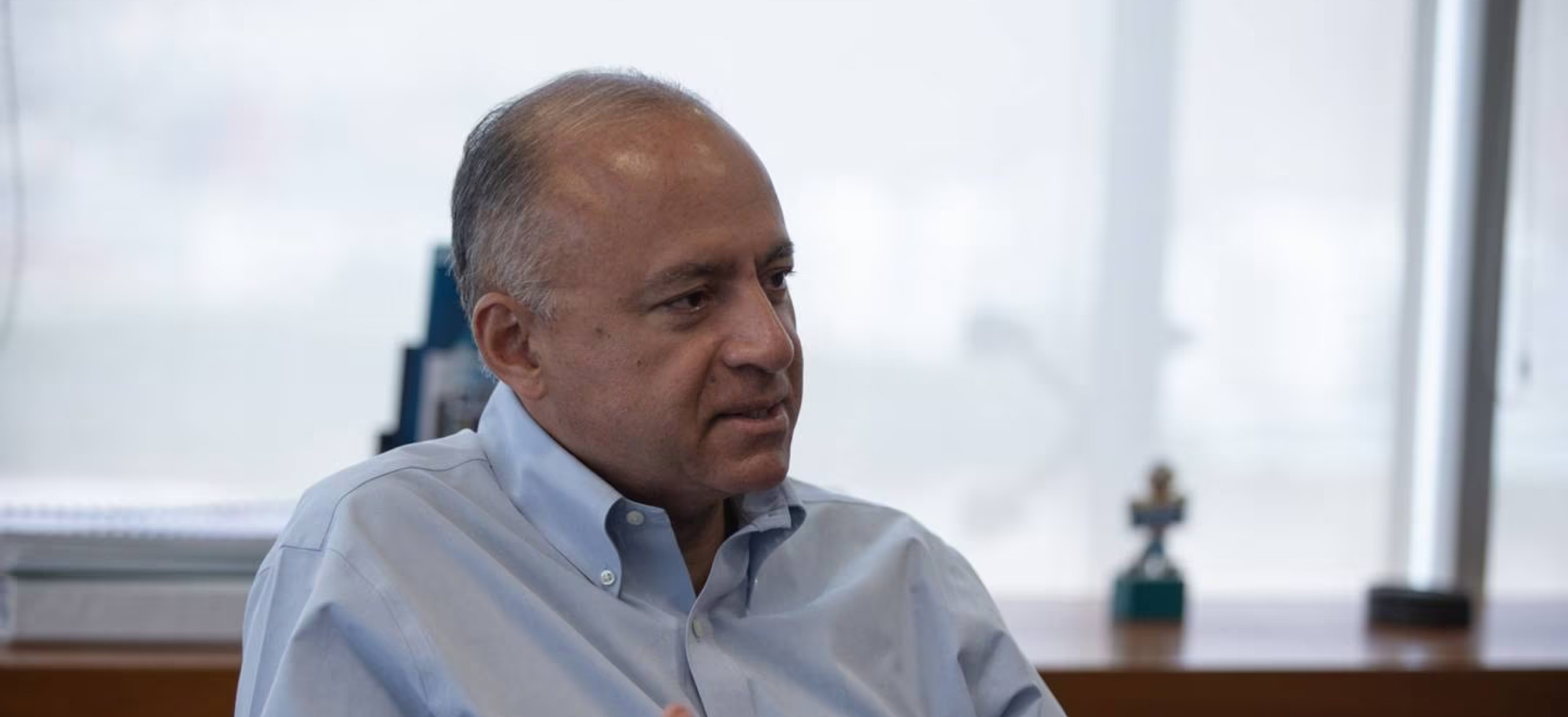Lima, JULY 25 2023Víctor Gobitz, president of the Mining Summit, claims that Peru loses US$ 2 billion to illegal and informal gold mining

In a conversation with the Peruvian Institute of Mining Engineers, Víctor Gobitz, president of the Mining Summit, the main event at PERUMIN 36 for reflecting on the local and global mining developments, tells us more about the official activities that will take place in the context of this event, how much more visibility they will give to the mining sector on the public agenda, and the opportunities that they will bring for the development of our country.
The Mining Summit is the main event at PERUMIN 36. What are your expectations for this new edition, what innovations will it bring, and who will be among the guests?
This time we have three important segments to kick off the convention. The first one will feature global CEOs who have experience in the region and the world and will help us understand how Peru is part of a group of mining jurisdictions. The second one will feature Peruvian CEOs and will help us understand the challenges facing the Peruvian mining industry. And the third one will deal with macroeconomic policies and, in particular, mining policies.
Furthermore, the program will provide a comprehensive overview of the new greenfield and brownfield mining projects, the issue of illegal and informal mining, the impact of clean energies, water management under climate change, territorial development as a key aspect to mining projects, and will end with a panel discussion on diversity and inclusion, a topic that is on the global and local mining agenda.
One of the topics that will be addressed at the meeting is the mining economic policy. Why should mining be considered an instrument of public planning for the sustainable development of Peru?
The national GDP is worth approximately US$ 230 billion, with mining projects alone accounting for US$ 60 billion. Mining is, therefore, one of the few sectors with great economic power for development. On the other hand, mining is an export industry that operates primarily in the high Andean territories; this means it necessarily has to develop inbound and outbound logistics, which, in turn, creates an economic corridor that becomes integrated as it becomes integrated with larger markets.
So, if we consider the planning of our country with this concept in mind, the size of the investment vis-à-vis the size of the Peruvian economy, and the possibility of integrating places, we can understand the reason for the correlation between mining and many other sectors, such as housing, construction, energy, tourism, and agriculture, since all of them will benefit from the synergies that these economic corridors create.
Water and climate change are issues that will also be addressed. When it comes to water management, how responsible is our mining industry and how is climate change affecting it?
Water is a key component in the development of the mining industry, so the industry has developed techniques that allow us to recycle and maximize the use of the available water. Having said that, we need to understand that toward the north of Peru, up to the capital, there is a constantly positive water balance. It is in the south that we have the great challenge of a negative water system. The debate is very relevant, especially in the projects and operations located in the south of Peru, where we have a more substantial water deficit due to climate conditions.
Another issue that will attract public attention is the brownfield investment portfolio in Peru. Some of the projects are being implemented. What is your outlook for this type of projects in the current decade?
Brownfield projects are existing operations that generally seek to extend the useful life of the asset or expand its production. They are based on the knowledge of the land they already occupy. Now, what we expect is a State that will speed up the review of environmental studies so that the process of reaching agreements with landowners will be faster. This is important because it will make the level of production already achieved sustainable.
As for greenfield projects, what we also need is a State that readily approves expeditious land access permits and agreements. And as a third component, we also need the mining companies to engage in associativity, since there are projects where they could partner together because they are in the same district and could then have common infrastructure. This can reduce investment levels, speed up implementation, and make it easier to obtain environmental permits.
In that sense, which are the mining projects in the portfolio where companies could partner together and share infrastructure in order to create more synergies, and in which regions is that possible?
To be more specific, in the north of Peru, if we look at Cajamarca, we will see that this non-coastal region has large-scale projects, such as La Granja, Michiquillay, Galeno, and Conga, and the first thing we need to discuss is what the port of exit for this future production will be. On the other hand, we need energy, water, tailings deposits, etc.; that is infrastructure that can be shared. If these four projects are carried out in isolation, then they will take too long. Therefore, a better alternative is to promote associativity among them, by having them share infrastructure or by creating an entity that will group all the concessions and optimize mining sequence.
At the Mining Summit you will also be discussing the competitiveness of our country's mining industry compared to other jurisdictions. What are the factors that make us less competitive and how do you think we can turn this situation around?
There are three factors. The first one has to do with red tape, environmental permits and mining operation licenses. We believe that ideally there should be a single entity that represents the State and has a holistic view from the Presidency of the Council of Ministers. This would be the most efficient way to speed up the permitting process without changing the standards.
The second factor has to do with access to land. We need to combine public and private efforts to get people to see mining projects as potential catalysts for territorial development. If we only think of mining projects as an opportunity to make money or implement a toll, we have the wrong perspective. But if we see it as a chance to create an economic hub that will allow us to connect Andean lands with the coast, this could be a very beneficial prospect.
Last but not least is the issue of public infrastructure. Mining is an export industry that requires the integration of mining projects through Peru’s public infrastructure development plan. We need to tie together the implementation of highways, ports, and transmission lines that will support this group of projects in order to create more synergies. This would create a virtuous circle.
This event will also devote some time to discussing illegal and informal mining. How much money does this activity move and how is it damaging large- and medium-scale formal mining?
The State has been trying to formalize them for almost 20 years, and clearly there have been no concrete results. But, to put it in context, it is estimated that over one million ounces of gold are produced informally and illegally each year, which is close to US$ 2 billion and almost 1% of the GDP, with informal mining employing between 400,000 and 500,000 people. That is how much Peru is losing and the real magnitude of the problem.
Obviously, this type of activity undermines institutionality because it buys supplies and transports materials across the country without complying with any standards or respecting labor rights, and with no environmental permit.
And how does illegal and informal mining affect responsible and sustainable large-scale and medium-scale mining, and what can companies do in these cases?
Recently, there have been reports of cases of criminal organizations that are trying to take control of formal mining operations, especially in northern Peru. Poderosa, which is the largest gold producer in the country, is experiencing this.
As for large-scale and medium-scale gold mining, this industry is developed under the concept of economies of scale, that is, large volumes of products and low costs. However, illegal gold mining is the opposite. It is labor intensive and based on higher metal contents. That said, they do not necessarily share the same space, although their production chain dynamics are similar. That is why, we, the mining industry, know what the opportunities for improvement are and what we need to do together to achieve sustainable formalization.
So, I believe that this new edition of the Mining Summit will serve precisely to look for solutions, and these include the creation of mechanisms and economic incentives that will allow this sector to become formalized, provided that it complies with environmental and labor standards.







